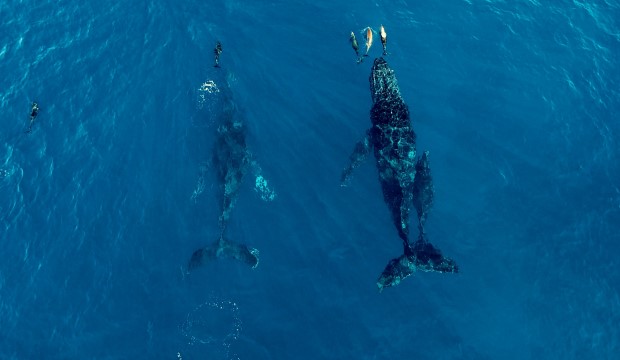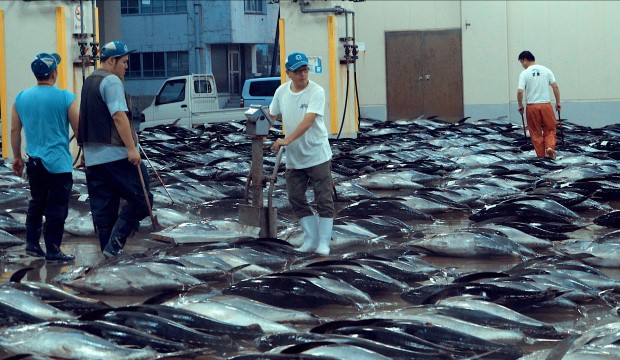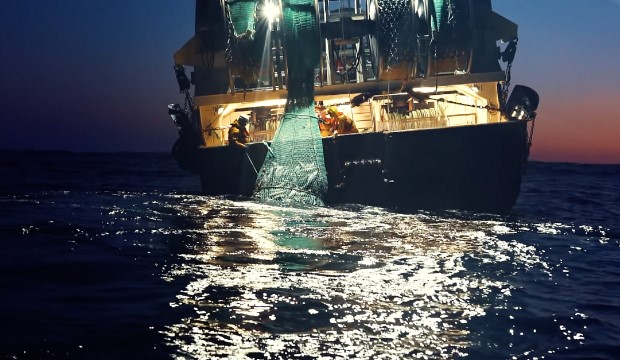Seaspiracy documentary facts: five big questions
Ali Tabrizi's new and controversial Netflix documentary Seaspiracy confronts many issues around commercial fishing, but some questions still linger
Photo: Netflix
After
watching Seaspiracy, you won’t look at seafood in the same way again. This
controversial Netflix documentary, made by 27-year-old filmmaker Ali
Tabrizi, examines the brutal impact of commercial fishing on the global
environment. Pushing further than shopping bags and drinking straws, Tabrizi says the best thing humanity can do is stop eating fish. That
will, the documentary concludes, discourage commercial fishing and help wounded ecosystems.
Seaspiracy is a film to treat with trepidation. Its over-the-top filmmaking style and very biased interviews have prompted many to question the presented claims. However, the verified realities leave you in deep thought and resignation about these capitalistic systems causing harm for profit. Here are five questions we had after watching the documentary.
Is there such thing as sustainable fishing?
This has been a major point of contention. In the film, Tabrizi accuses various charity organisations – the Marine Stewardship Council (MSC) among them – of hiding the fact that industrial fishing can never be 100% sustainable. Sustainable fishing promises that the environment or ecosystem where the fish is caught won't be disrupted or affected.
The MSC has a famous blue tick on fish products, indicating that they were from sustainable sources. The Earth Island Institute also imposes a Dolphin Safe label, the few observers for which can be bribed (the documentary alleges).
The MSC have understandably taken issue with the Seaspiracy accusations, responding that their certification is not an easy process and that long-term sustainable fishing is possible. According to their website, ‘fisheries certified to the MSC Standard must provide evidence that they are actively minimising unwanted catch.'

Photo: Netflix
Are dolphins and whales killed via bycatch?
There’s plenty to say about whaling, but a large proportion of dolphins and whales die from commercial fishing. They are often caught with targeted species and then disposed of afterwards. The worrying statistic that 40% of all marine life caught is thrown overboard is supported by the WWF and PETA.
But that figure is based on what some consider an outdated study, with bycatch data often being unreliable. Other sources have claimed that the reality is closer to 10%, which, though significantly smaller, is still incredibly worrying and harmful to various ecosystems. According to WWF and the documentary itself, 300,000 whales and dolphins are killed every year via bycatch.

Photo: Netflix
Will oceans be depleted by 2048?
This claim has been widely criticised, chiefly because it’s based on a New York Times article from 2006. The authors of the study cited in the article have since overturned those projections, acknowledging the new fishing regulations in place. One of whom, Professor Boris Worm, has discussed in a recent BBC article the ‘countless efforts under way to repair the damage that has been done’.
However, industrial fishing is still a major factor in the endangerment and near-extinction of many species of fish, including tuna.

Photo: Netflix
Are fishing nets more deadly than drinking straws?
According to the journalist George Monbiot in the film, 46% of the Great Pacific Garbage Patch – a vast collection of debris in the North Pacific – consists of fishing nets. This calls into question why a lot of the media and marketing focuses on plastic straws, which only account for 0.03% of plastic entering the ocean.
All of this is reportedly true, and that figure for plastic straws has even been rounded up from 0.025%. The discarded nets are more harmful because they’re specifically designed to catch sea life. According to Greenpeace, this abandoned fishing gear is responsible for the majority of large plastic pollution in the oceans.

Photo: Netflix
Is seafood actually unhealthy?
Tabrizi interviews Dr Michael Greger – a spokesperson for public health – who lists all the pollutants present in fish. Heavy metal toxins, plastic compounds, and even flame retardants can be found. Mercury is a particularly populous chemical, absorbed by plankton which are then consumed by surrounding fish. According to Dr Michael Kalper, also interviewed, the essential and healthy Omega-3 fatty acids come from the algae the fish consume – lost in the contamination process.
These claims appear to be correct, supported PETA’s breakdown of the harm in eating fish.
Seaspiracy is now available to watch on Netflix
Seaspiracy is a film to treat with trepidation. Its over-the-top filmmaking style and very biased interviews have prompted many to question the presented claims. However, the verified realities leave you in deep thought and resignation about these capitalistic systems causing harm for profit. Here are five questions we had after watching the documentary.
Is there such thing as sustainable fishing?
This has been a major point of contention. In the film, Tabrizi accuses various charity organisations – the Marine Stewardship Council (MSC) among them – of hiding the fact that industrial fishing can never be 100% sustainable. Sustainable fishing promises that the environment or ecosystem where the fish is caught won't be disrupted or affected.
The MSC has a famous blue tick on fish products, indicating that they were from sustainable sources. The Earth Island Institute also imposes a Dolphin Safe label, the few observers for which can be bribed (the documentary alleges).
The MSC have understandably taken issue with the Seaspiracy accusations, responding that their certification is not an easy process and that long-term sustainable fishing is possible. According to their website, ‘fisheries certified to the MSC Standard must provide evidence that they are actively minimising unwanted catch.'

Photo: Netflix
Are dolphins and whales killed via bycatch?
There’s plenty to say about whaling, but a large proportion of dolphins and whales die from commercial fishing. They are often caught with targeted species and then disposed of afterwards. The worrying statistic that 40% of all marine life caught is thrown overboard is supported by the WWF and PETA.
But that figure is based on what some consider an outdated study, with bycatch data often being unreliable. Other sources have claimed that the reality is closer to 10%, which, though significantly smaller, is still incredibly worrying and harmful to various ecosystems. According to WWF and the documentary itself, 300,000 whales and dolphins are killed every year via bycatch.

Photo: Netflix
Will oceans be depleted by 2048?
This claim has been widely criticised, chiefly because it’s based on a New York Times article from 2006. The authors of the study cited in the article have since overturned those projections, acknowledging the new fishing regulations in place. One of whom, Professor Boris Worm, has discussed in a recent BBC article the ‘countless efforts under way to repair the damage that has been done’.
However, industrial fishing is still a major factor in the endangerment and near-extinction of many species of fish, including tuna.

Photo: Netflix
Are fishing nets more deadly than drinking straws?
According to the journalist George Monbiot in the film, 46% of the Great Pacific Garbage Patch – a vast collection of debris in the North Pacific – consists of fishing nets. This calls into question why a lot of the media and marketing focuses on plastic straws, which only account for 0.03% of plastic entering the ocean.
All of this is reportedly true, and that figure for plastic straws has even been rounded up from 0.025%. The discarded nets are more harmful because they’re specifically designed to catch sea life. According to Greenpeace, this abandoned fishing gear is responsible for the majority of large plastic pollution in the oceans.

Photo: Netflix
Is seafood actually unhealthy?
Tabrizi interviews Dr Michael Greger – a spokesperson for public health – who lists all the pollutants present in fish. Heavy metal toxins, plastic compounds, and even flame retardants can be found. Mercury is a particularly populous chemical, absorbed by plankton which are then consumed by surrounding fish. According to Dr Michael Kalper, also interviewed, the essential and healthy Omega-3 fatty acids come from the algae the fish consume – lost in the contamination process.
These claims appear to be correct, supported PETA’s breakdown of the harm in eating fish.
Seaspiracy is now available to watch on Netflix
TRY CULTURE WHISPER
Receive free tickets & insider tips to unlock the best of London — direct to your inbox
| What | Seaspiracy documentary facts: five big questions |
| Price | £n/a |
| Website | Click here for more information |